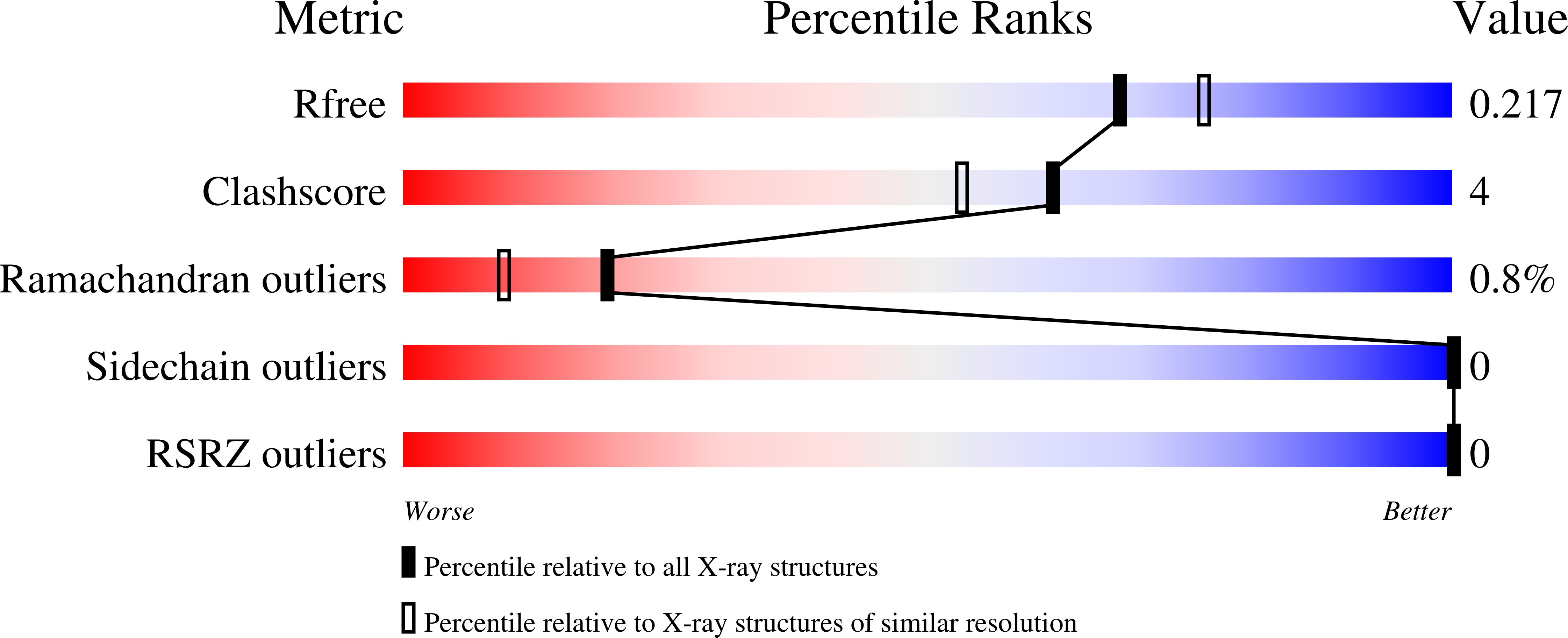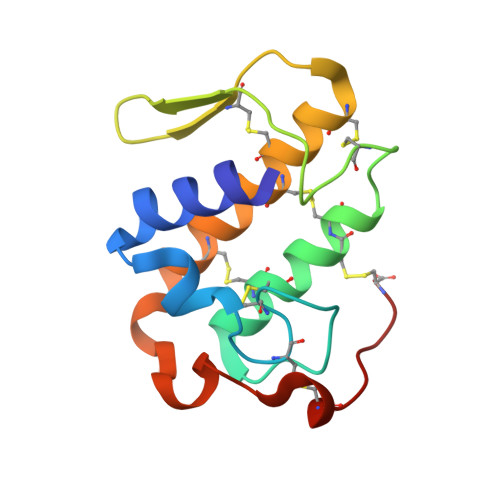Structural studies with BnSP-7 reveal an atypical oligomeric conformation compared to phospholipases A2-like toxins.
de Lima, L.F.G., Borges, R.J., Viviescas, M.A., Fernandes, C.A.H., Fontes, M.R.M.(2017) Biochimie 142: 11-21
- PubMed: 28751219
- DOI: https://doi.org/10.1016/j.biochi.2017.07.009
- Primary Citation of Related Structures:
5VFH, 5VFJ, 5VFM, 5VFN - PubMed Abstract:
There are 2.5 million cases of snakebite per year and approximately 100,000?to 150,000 deaths. Thus, it is considered an important public health problem by the World Health Organization. Snakes from the Bothrops genus may cause severe local effects in the victims, so it is important to develop inhibitors to treat local effects in patients. In addition, approximately 30 different species of bothropic snakes have been described that may present differences in their venom composition. Small structural differences in the venom proteins may result in different ligands binding. Herein, BnSP-7, a PLA 2 -like protein that causes local myotoxic effects, was analyzed using different biophysical techniques. Crystal structures of BnSP-7 binding to three different cinnamic acid derivates were solved showing that the ligands bind in the membrane-dockage region (MDoS) of the protein. Spectroscopy fluorescence and microscale thermophoresis (MST) assays showed that these ligands also bind to BnSP-7 in solution and provide comparative information about their affinity to BnSP-7. MST experiments also showed that hydroxyl radicals of the ligands, involved in their binding with the MDoS region of BnSP-7, are essential to increase their affinity with the protein. As this region has been indicated as essential for the myotoxic mechanism, the ligands could potentially be used as inhibitors for BnSP-7. These results provide relevant insights to understand the PLA 2 -like proteins myotoxic mechanism and may eventually lead to design of new inhibitors for these toxins. Furthermore, a comparative structural analysis of BnSP-7 with other PLA 2 -like proteins showed that BnSP-7 has an atypical quaternary conformation, suggesting an intermediate state that is unlike other PLA 2 -like proteins. This information, combined with the absence or partial occupancy of molecules in their hydrophobic channel and the misaligned membrane-disruption region, led us to hypothesize that the protein is not able to fully exert its myotoxic activity like other PLA 2 -like proteins.
Organizational Affiliation:
Departamento de F¨ªsica e Biof¨ªsica, Instituto de Bioci¨ºncias, Universidade Estadual Paulista (UNESP), Botucatu, SP, Brazil.

















